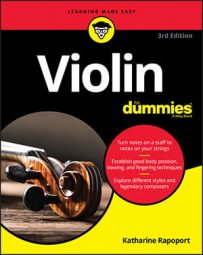Meter is the rhythm and beats of a song, and it’s indicated by the time signature: those numbers written on the music staff at the start of a piece of music. The top number tells you how many beats are in a measure, and the bottom number tells you which kind of note equals a beat. If you can feel the beat, you can get a good grip on the musical flow of a song.
Just like humans and animals, music has a pulse. It’s a regular unit of time. One way for you to start feeling the pulse of the music is to just tap your foot or lightly clap your hands with the main beats you hear in a favorite song. Usually the words will give you a clue about the main beats: “GOD save our GRA-cious Queen. . . . .”
Don’t worry about being mechanically perfect — even getting an overall sense of the beat is a great start, because this is a skill that definitely becomes more developed and confident the more you clap and tap your way through songs you are listening to and playing. Eventually you’ll be able to pick up on the beat very quickly, so that you can make sense of your music.
Following is a listening recommendation for recognizing the pattern of some of the most common meters in violin music. Getting a sense of different meters really helps you to play the violin with the right groove, the confident feeling you get when you know which notes to emphasize and which ones to just bounce on through.
3/4 meter: One of the most famous pieces with 3/4 meter is “The Blue Danube” waltz. You probably also know another example, the British National Anthem, “God Save the Queen.”
4/4 meter: For examples of 4/4 meter, think about marches that you’ve heard, such as the Wedding march by Mendelssohn (“Here Comes the Bride”), or the march from Verdi’s famous opera Aida.
2/4 meter: To hear 2/4 meter, check out the cheerful polka, a dance that originated in Bohemia long ago and which has developed a number of offshoots in American music genres. You may already know the “Pizzicato Polka” by Johann Strauss II, and if not, you can easily find it online.

